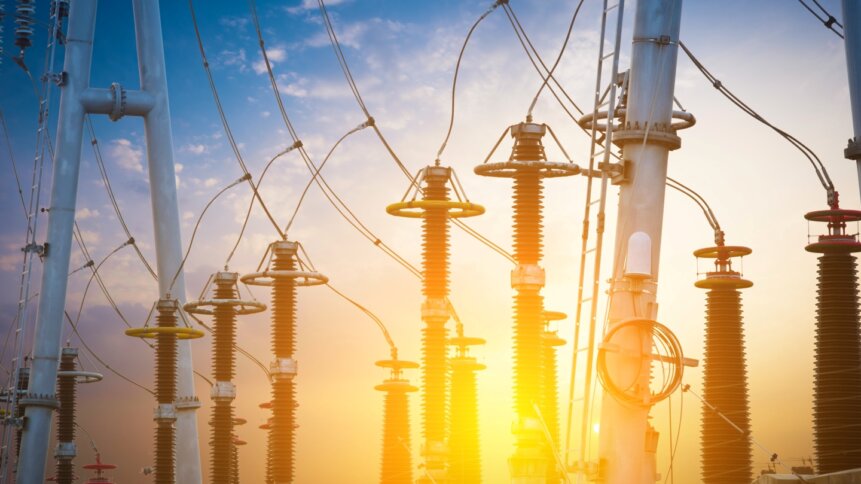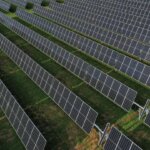Magnetic transformer technology trims energy costs

With energy prices weighing on the minds of businesses, it’s worth looking at some of the technology that could help trim those costs. And one area that is ripe for transformation, literally, is the energy being lost in the power grid. To streamline operations, UK tech firm IONATE has developed a so-called ‘hybrid intelligent transformer’ – a drop-in power-flow control device that replaces traditional designs, some of which have their origins way back in the last century. From a consumer perspective, benefits of the transformer technology include fewer blackouts, more support for electric vehicles and rooftop solar, and lower energy prices.
Use cases include electricity grids, wind generation, solar, and energy storage. Over past decades, there’s been tremendous innovation in renewables – for example, in solar there has been improvement not just in the efficiency of photovoltaics, but also in manufacturing. And those savings add up. The cost per Watt has dropped from $105.7 in 1975 to just $0.2 in 2020 (according to IEA data). Given these gains, it makes no sense for green energy inputs to then be wasted as they travel over the grid.
At the same time, the variable nature of renewable supplies ramps up the difficulty for energy managers, who already have to contend with abnormalities such as voltage spikes, drops, and power surges. IONATE points out that distribution grid voltage profiles are complex and vary constantly. And the firm comments that the total cost of poor power quality, due to harmonics and transients, could be costing the UK and EU economies more than £180 billion per year.
From power plant to plug socket
Getting electricity from power sources to the plug sockets that feed our laptops, charge our smartphones, and much more besides, involves a series of hops. From the power plant – which could be a gas-fired turbine facility, wind farm, solar array, or hydroelectric dam – a step-up transformer prepares the electricity for transmission. As the voltage goes up, the current goes down and that minimizes transmission losses related to the resistance of the cables. There are other factors too – for example, higher currents would require thicker cables and that would have a knock-on effect on the engineering of transmission towers, or pylons, required to carry that extra weight.
After traveling (potentially) hundreds of miles at hundreds of thousands of volts, the electricity is then stepped down to thousands of volts for transmission on distribution grids to factories, homes, and other facilities. Finally, another substation or smaller transformer further down the line outputs the electricity that’s ready, more or less, for use. Losses in these power conversions add up, which is why technology stack improvements have the potential to make significant savings.
IONATE’s power-flow design combines a number of steps into one, offering sensing and monitoring, dynamic voltage- and power factor control, and harmonics removal all within one device. And underpinning the breakthrough is a novel use of magnetics that provides the dynamics and responsiveness of power electronics, but retains the simplicity of a transformer. Direct end users will be distribution network operators and distribution system operators, the latter reflecting next generation electricity systems that draw on a wide range of supplies and storage options.
Energy storage innovation
This month, Infra Balance New Energy – a company with more than 500 MW of ready-to-build energy storage assets in its phase 1 pipeline – announced that it is teaming up with IONATE to bring infrastructure to the electricity grid that will help to balance supplies fed with increasing amounts of renewable energy. Next-generation energy storage infrastructure will be critical in absorbing the intermittent injection of power into the grid that goes hand-in-hand with sources such as wind and solar. And IONATE’s transformer technology will enhance battery performance and lifetimes, as well as reduce the occurrence of electronics failures through better power management.
2022 has been a good year from the firm, as it won the EIC’s Energy Innovation Award for Future Energy System, recognizing the potential of hybrid intelligent transformers to deliver a positive impact on energy systems transition. Currently, IONATE is working with its manufacturing partner to deliver a full scale version of its hybrid intelligent transformer ahead of proof-of-concept trials of the equipment at multiple sites scheduled for 2023.
Helping to fund this growth is £3.3 million of seed funding that was announced in the summer. The finance round included contributions from the University of Edinburgh’s venture fund. IONATE’s first prototype was built in the University’s labs and the company continues to collaborate with staff at the School of Engineering. Other support, includes backing from Smartworks, the investment arm of leading Austrian energy supplier Wien Group.
Improvements in wind and solar may grab the headlines, but innovation in the electricity grid is a key element too in the transition to a net zero world by 2050. More efficient power distribution – which could also include the use of AI to forecast demand – will also bring savings to the network.









